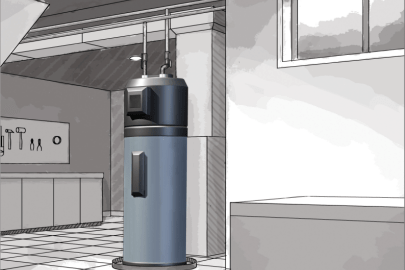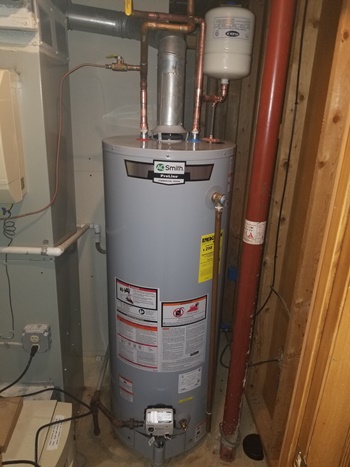Easy Ways to Maintain Your Home's Hot Water System Properly
Easy Ways to Maintain Your Home's Hot Water System Properly
Blog Article
Are you searching for answers involving Tips For Maintaining Your Hot Water Heater?

Hot water is crucial for everyday convenience, whether it's for a rejuvenating shower or cleaning dishes. To guarantee your hot water system runs effectively and lasts much longer, regular upkeep is key. This post provides functional pointers and insights on exactly how to keep your home's hot water system to stay clear of disruptions and expensive fixings.
Introduction
Preserving your home's warm water system might appear daunting, however with a couple of straightforward steps, you can ensure it runs efficiently for many years ahead. This guide covers every little thing from recognizing your hot water system to DIY upkeep pointers and understanding when to employ professional assistance.
Relevance of Maintaining Your Hot Water System
Normal upkeep not only expands the life expectancy of your hot water system but additionally guarantees it runs successfully. Disregarding upkeep can cause lowered performance, greater power expenses, and also early failing of the system.
Indicators Your Warm Water System Demands Upkeep
Recognizing when your hot water system needs interest can protect against major problems. Watch out for indications such as inconsistent water temperature, unusual noises from the heating unit, or rusty water.
Flushing the Water Heater
Flushing your hot water heater removes sediment buildup, improving efficiency and lengthening its life.
Monitoring and Changing Anode Rods
Anode poles protect against deterioration inside the container. Checking and changing them when worn is important.
Complex Issues Needing Professional Help
Instances consist of major leaks, electric troubles, or if your water heater is consistently underperforming.
Regular Expert Maintenance Benefits
Specialist upkeep can include detailed examinations, tune-ups, and making sure compliance with safety criteria.
Examining and Adjusting Temperature Level Settings
Readjusting the temperature settings makes certain ideal performance and safety and security.
DIY Tips for Upkeep
You can carry out numerous upkeep tasks on your own to keep your warm water system in top problem.
Checking for Leakages
Frequently inspect pipelines and connections for leakages, as these can result in water damage and higher expenses.
Understanding Your Warm Water System
Before diving right into maintenance jobs, it's valuable to recognize the standard elements of your warm water system. Usually, this includes the water heater itself, pipes, anode poles, and temperature level controls.
Regular Monthly Upkeep Tasks
Regular monthly checks can help catch minor issues prior to they escalate.
Checking Stress Relief Valves
Examining the stress relief valve guarantees it works correctly and stops excessive pressure build-up.
Insulating Pipes
Insulating warm water pipelines decreases warmth loss and can save energy.
When to Call a Specialist
While DIY upkeep is beneficial, some problems call for professional know-how.
Verdict
Regular upkeep of your home's hot water system is vital for performance, long life, and cost savings. By adhering to these pointers and knowing when to look for specialist help, you can guarantee a trusted supply of warm water without unexpected interruptions.
Water Heater Maintenance Tips
Test the TPR Valve
Shut off the power and the cold-water supply valve. Place a bucket under the pipe connected to the temperature-pressure-release (TPR) valve on the top or side of the tank. (This valve opens if the tank pressure gets too high.) Lift the valve’s tab to let some water out, then let go. If water keeps flowing, drain the tank partway, unscrew the old valve with a pipe wrench, and install a new one. Check the Anode Rod
Put a hose to the tank’s drain cock and let out a few gallons of water. Now fit a 1 1/16-inch socket onto the rod’s hex head on top of the heater (or under its top plate) and unscrew the rod. If it’s less than ½ inch thick or coated with calcium, buy a new one, wrap its threads with Teflon tape, put it back in the tank, and tighten securely. Use this segmented rod if headroom above the tank is limited. Drain the Tank and Wash Out Sediment
Drain the remaining water in the tank into the bucket, then stir up the sediment on the tank’s bottom by briefly opening the cold-water supply valve. Drain and repeat until clean water comes out of the hose. Close the drain cock, refill the tank, and turn its power back on. Adjust the Temperature
Find the temperature dial on the side of the tank and unscrew its cover. Adjust the dial to 120 degrees using a flathead screwdriver. For every 10 degrees the temperature is lowered, you can expect to save up to 5 percent in energy costs. Turn the water heater off or the thermostat down to its lowest setting if you plan to be away from home for more than three days. Insulate the Pipes
Buy some self-sticking 3/8-inch-thick foam pipe insulation that matches the pipes’ diameter. Slide the foam over the hot-and cold-water pipes as far as you can reach. Insulating the cold-water pipe prevents condensation in summer. Peel the tape and squeeze the insulation closed. If the pipe is 6 inches or less from the flue, cover it with 1-inch-thick unfaced fiberglass pipe wrap. https://www.thisoldhouse.com/plumbing/21016402/how-to-maintain-a-water-heater

I am just very drawn to Tips on Maintaining a Water Heater and I really hope you liked the entire blog posting. You should set aside a second to promote this post if you liked it. We appreciate reading our article about How to Maintain Your Water Heater & Prolong its Life.
Pricing Report this page